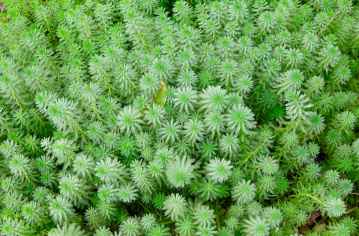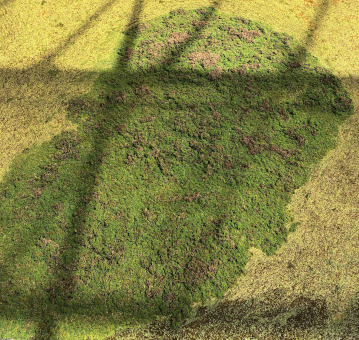The Azolla Fern
Azolla Fern Overview
Like Blue-Green algae, Azolla ferns greatly enhance soil biology. The decomposition of Azolla results in a sugar–carbon exchange in the root exudates which swap vitamins and minerals with soil or water. In fact, some Azolla species found in Asia contain Anabaena Azollae Cyanobacteria related to Aphanizomenon Flos-aquae (AFA).

The Azolla fern has existed for 80 million years. Approximately 49 million years ago, the aquatic Azolla fern (also known as Mosquito fern), which had only existed in the Arctic, began to grow into a dense mat that filled a huge area in the Arctic circle. This had a dramatic effect upon the planet. In the following period of about one million years, the Azolla ferns moderated and cooled Arctic temperatures to the climate that exists today. The Azolla fern is now found in tropical and temperate areas on nearly every continent.
Azolla is the smallest of the fern species. It contains phosphorus, potassium, amino acids, lipids, polyphenols, anthocyanins (especially in its reddish leaves), tannins, plant sugars, and caffeic acids. The Azolla fern fixes nitrogen, releases oxygen, and sequesters carbon dioxide from the air. This floating plant requires water and also helps clean and purify stagnant and polluted water. It prefers aeration and partial shade.
How To Use Azollas
Azolla biomass can be used for biofuel, biochar, soil amendments, fertilizers, and agricultural and building products. Harvesting can be done by hand, with a scoop, net, start tray, or any tool or method that collects this floating material. Azolla ferns can provide food for animals including farm animals and freshwater fish (such as tilapia and manatees). It has a great potential to provide nutrients for the human diet.

In Asia, Azolla ferns are used to feed nutrients into rice ponds. The decomposition of Azolla accelerates rice growth with a yield that is approximately twice as high as normal. Additionally, as it grows, the Azolla fern helps control algae growth which permits the crops to thrive. This repeatable phenomenon of increased rice field growth in areas where the Azolla fern is present has been well-researched and documented in China, Japan, Thailand, India, Malaysia, Indonesia, and Myanmar. Carbon sequestration by Azolla ferns produces more soil carbon capture than most plants. The Azolla fern can double its biomass in a few days which could result in an excessive amount.
Azolla fern cultivation has increased in popularity in recent years. They are being grown in small rectangular ponds on farms, particularly in the Phillippines, India, Bali, and Thailand. The Azolla fern is truly a marvel waiting to be developed in as many ways as possible.
Additional Resources
Project Azolla: From Floating Fern to Renewable Resource
video, 10m
Azolla Feed Cultivation: Simple Method of Farming
video, 13m
How To Grow Duckweed & Azolla
video, 40m
Additional Photos


